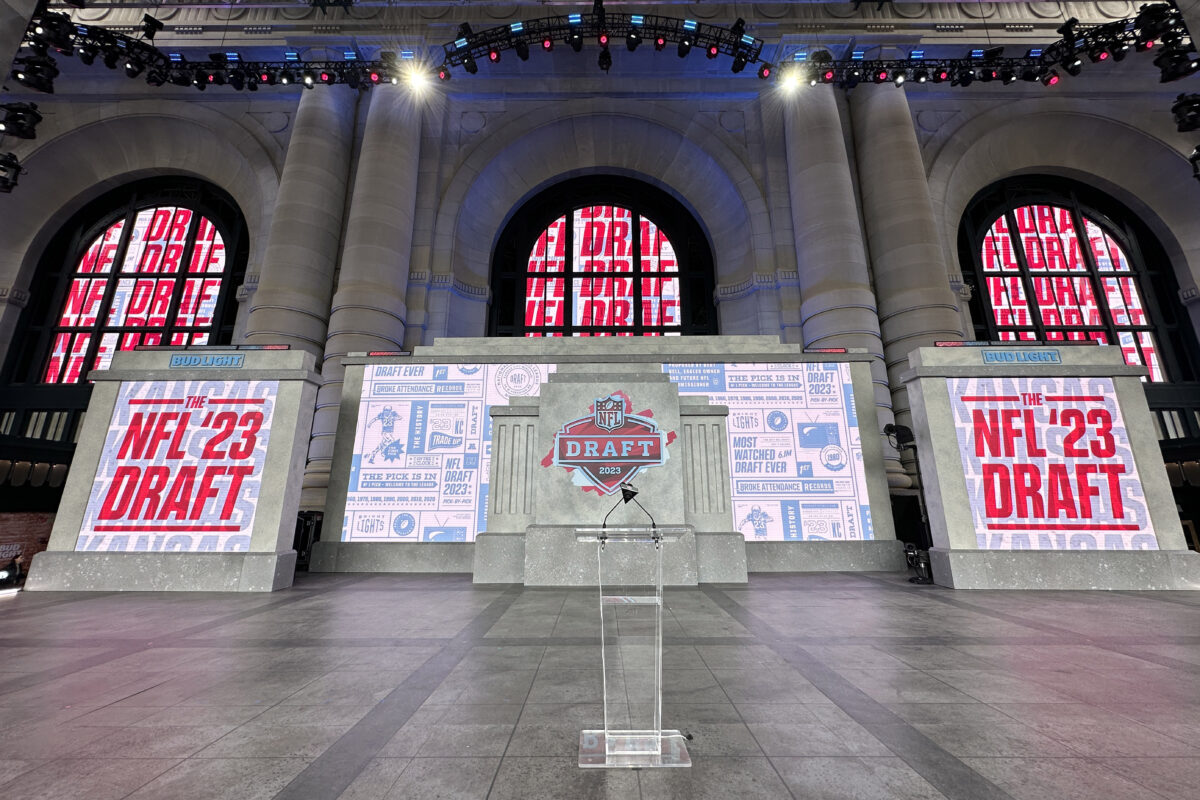Monti Ossenfort reveals the draft evaluation truth: ‘We have our board upstairs and 31 other teams’ board doesn’t look like ours’
Nine years ago, the Pro Football Hall of Fame established a separate selection sub-committee so general managers, owners and other significant contributors wouldn’t be competing against modern-day players for enshrinement.
That resulted in longtime general managers Ron Wolf and Bill Polian earning busts in the hallowed halls of Canton, Ohio. Since then, Bobby Beathard and Gil Brandt have also entered the exclusive fraternity.
At the age of 81, Polian is a Hall-of-Fame selector and can be heard on SiriusXM NFL Radio.
Always opinionated, Polian had some stinging words during a recent segment on the Pro Football Hall of Fame radio show I co-host with Joe Horrigan on SiriusXM NFL Radio.
[affiliatewidget_smgtolocal]
Noting how the media world is inundated with draft opinions since he became a general manager for the Bills in 1986, Polian said, “There’s certainly more of it than there ever was. It’s exploded with experts everywhere you turn. When I was a GM, I told the scouts and the staff and the folks in the building, ‘Don’t want to hear it, don’t want to see televisions on. We’ll get whatever information and intelligence we need from the people who are in charge of doing that, which are the scouts. Don’t want the coaches talking to anybody and there’ll be hell to pay if you do.’ I don’t want to hear anybody saying, ‘The Colts are leaning in this direction or that direction.’
“We had pretty good luck in terms of keeping (a) what we were doing quiet and b) not having people in the building listening and then waiting and watching for every word. That upset the local media, but I didn’t lose any sleep over that. Of course, they were going to give us a C in the draft anyway. I would always end my post-draft press conference by saying I’ll happily take the C that you’re going to give me and I’ll see you in the playoffs in January.”
Cardinals general manager Monti Ossenfort emphasized the team’s process and philosophy during his session with the media Thursday and all teams have their own way of preparing.
Polian said, “We stuck to our process religiously and it always worked for us. That’s not to say we were perfect; no one ever is. Ron and I have both been quoted numerous times saying, ‘If you bat .550 in your career in the draft, you’re probably gonna get a Gold Jacket. It’s an inexact science at best, but we had a process that we followed.”
Ossenfort was asked how close the opinions from all the so-called experts and insiders are to reality.
He said, “That’s a great question. I’m not sure. What I do know is that we have our board upstairs and 31 other teams’ board doesn’t look like ours. Now we think we nailed ours, but we nailed ours for our team. What works for us is not going to be what works for somebody else and I get that. Somebody is going to value a player higher than we do, which is fine; it happens every year. In terms of the media or what’s out there and the public perception, it’s hard to say. What I do know is that where we think one player goes, it could be completely different than what everybody else thinks.”
Polian noted that the “(insiders) talk to people and are creating this false narrative that people move up and down the draft board willy-nilly and they jump three rounds and guys are discovered somewhere at a Pro Day. That’s why you have scouts. We start with 500 names on the board and we winnow it down to 100, so we know who everybody is. And they go to the Combine and they’re breathless: ‘This guy ran a 4.33 and we never heard of him before.’ Well, we heard of him and he probably can’t play.”
I have always been told that in most drafts, when the first round arrives at around pick 16, there is a little difference between the next 32 picks from the middle of the first round to the middle of the second.
Polian agreed, saying, “Here is something that most people forget or don’t know. On any given draft board around the league there’ll be anywhere from 18 to 20 players with first-round grades. There aren’t 32 first-round players. So, when you get to 20 or so and people want to trade out, it’s because there are no first-rounders left on the board and they don’t want to use a first-round pick on a second-round player.”
Still, teams will sometimes trade into the first round, but that’s because they want to ensure they get a player at a specific position that might not last until there the team is in the second round and if he excels there is the flexibility of having a fifth-year option available.
That why everyone watching should try to have a discerning outlook no matter what the Draft Industrial Complex says.
Listen to the latest from Cards Wire’s Jess Root on his podcast, Rise Up, See Red. Subscribe on Apple podcasts or Spotify.
